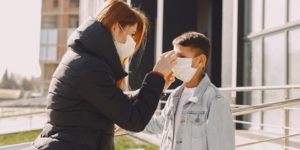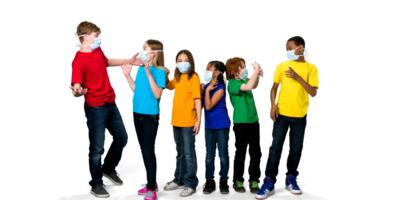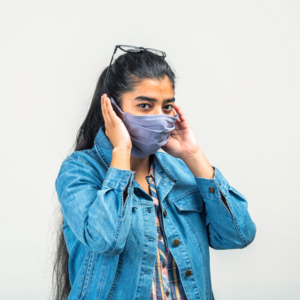Be Connected: Helping kids get used to face coverings
We put this post together to help you and your children adjust to seeing and wearing face coverings in public as you begin to resume normal activities. Visit this link for more information on face coverings for COVID-19.
As we move through the re-opening phases during the coronavirus pandemic, we are going to see a lot more people wearing face coverings and masks in public. People are starting to enjoy the warmer weather, and shaking off the cabin fever associated with the stay-at-home order.
This is still very new for us, and any change can be challenging. It is understandable that kids and young adults may have a hard time adjusting, and parents may be struggling to help them adapt.
Giving children age-specific reasons for wearing the face covering can be very helpful, meeting your child at their level and answering their questions. Below are some tips that can help parents and caregivers through this adjustment.
Young Children
The Centers for Disease Control (CDC) advises that face coverings should not be placed on children under 2 years old. For babies, toddlers, and young children, seeing people in face coverings or masks might take some getting used to. It is not uncommon for some to feel upset or afraid.
Young children rely on facial features to recognize other children and adults. Facial cues also help children feel comfortable. Covering faces helps slow the spread of viruses, but it also blocks the view of the friendly smiles and encouraging facial expressions that typically set kids at ease. Covering the faces of even familiar adults, like parents and caregivers, can be scary.
Here are a few ideas to help make them more familiar:
- Look in the mirror with the face coverings on and talk about it.
- Put a cloth face covering on a favorite stuffed animal.
- Decorate your own face coverings so they're more personalized and fun for your young children to see and engage with.
- Show your child pictures of other children and adults wearing them.
- Draw one on their favorite book or cartoon character.
- Practice wearing your face covering at home to help your child get used to it.
School-Aged Children
Asking kids to cover their own face can be equally challenging, but school-age children will likely be able to understand the importance of wearing a face covering or a mask to protect themselves and others if the concept is explained to them in simple, concrete terms. For example, you could say: “Doctors tell us that by wearing a mask, a person keeps their germs to themselves. We wear a mask to protect others from germs we might not know we have, so we can keep people around us safe. When you see others wearing a mask, know that they are keeping you safe from their own germs!”
Most school-age kids are able to adjust pretty quickly. But masks can be uncomfortable, especially in the hot weather, and getting kids to wear them might be tricky. Here are some ways to help school-age children get comfortable with wearing a face covering when you go out:
- Give them time to practice wearing their face covering before they might need to wear one outside of your home. Teach them how to put them on and take them off.
- Encourage kids to decorate their face covering with markers, stickers, or puffy paint. This might help them feel a sense of ownership and control over the situation. A personal touch can help make it more of a normal part of their routine, and make it more likely they'll want to wear their mask.
- Make them together. If you make face coverings at home, let your kids help you. There are no-sew face coverings that are easy to make, often with materials you probably already have (T-shirts, bandannas, etc.). If you sew masks, maybe kids can select the fabric or patterns for the ones they'll wear.
- Invite your child to draw or play about it. Leave out some masks in play areas for imaginary play or making drawings, including people or animals with masks on.
Older Children and Teens
Getting older children and teens to take safety seriously is a struggle at the best of times, and as we are in the process of reopening, it’s never been more important to ensure kids are following the rules. However, this is also an excellent opportunity to engage older children and teenagers in thoughtful discussions related to the importance of working together as a community to help one another. Try to empower your older children to discover their own role during the pandemic in an effort to encourage a sense of autonomy and responsibility. Consider the following:
- At first, older children and teens may fear that if they wear a face covering they will look different than their peers, or people will think they are sick. Show your children that plenty of other people are wearing face coverings or masks right now. Look up pictures and videos of kids their age wearing them, and ensure that they will blend in wearing a face covering rather than feeling singled out.
- Teenagers value independence and are often seeking their own sense of identity. Although wearing a mask is not a choice, perhaps give your teenage child the freedom to choose or purchase their own mask(s) to promote self-expression and turn it into a fashion statement.
- Your teenage child may roll his or her eyes when you make a pop culture reference, but their face covering can reflect their favorite memes, trends, and cultural icons. Send your teen the link to this Buzzfeed list of nonmedical masks you can buy online, with options featuring quotes and images from pop culture favorites like Animal Crossing, Mean Girls, The Office, and more.




